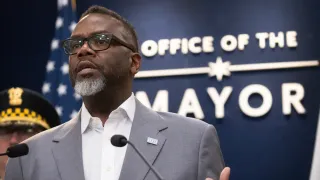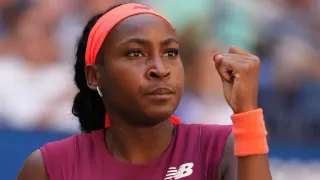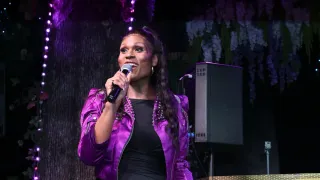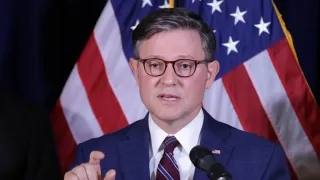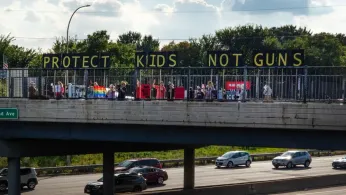
Aug 30
Fact Check Transphobes: Mass Shooters Are Not Disproportionately Transgender
READ TIME: 3 MIN.
On August 27, 2025, a mass shooting at Annunciation Catholic Church in Minneapolis left two children dead and 17 others wounded, including 14 children. The shooter, identified as Robin Westman, a 23-year-old trans woman, acted alone and subsequently took her own life. All weapons used in the attack were purchased legally, and Westman had a personal connection to the church, having attended the associated school as a student in her youth. Court documents confirm that a legal name change reflecting her gender identity was granted in early 2020 at her mother’s request .
In the aftermath, the FBI classified the incident as both “terrorism” and a “hate crime” targeting Catholics. The event quickly became a flashpoint for political debate, with some conservative figures and online communities labeling the tragedy as evidence of “trans-terrorism” .
Almost immediately, anti-LGBTQ+ rhetoric surged on social media and in conservative media outlets, with prominent politicians and commentators drawing sweeping conclusions about transgender people and mass violence. Notably, Rep. Marjorie Taylor Greene and Secretary of Homeland Security Kristi Noem made public statements equating transgender identity with mental illness and called for restrictions on gun ownership for trans people. Fox News host Jesse Watters cited the 2023 Nashville school shooting, in which the perpetrator was a transgender man, as further evidence of supposed “trans violence” .
Members of the Minneapolis transgender community reported a palpable sense of fear and increased discrimination following the church shooting, with many choosing to avoid public spaces in anticipation of backlash. LGBTQ+ venues noted decreased attendance, and community leaders expressed concern that political rhetoric was fueling stigma and misinformation .
Despite the political narrative, independent databases and experts overwhelmingly agree that transgender individuals are not disproportionately responsible for mass shootings in the United States. The Gun Violence Archive, which tracks incidents in which four or more people are shot or killed (excluding the shooter), estimates that fewer than 1 percent of mass shootings over the past decade involved transgender perpetrators .
Mother Jones, which maintains a separate database of mass shootings defined as “three or more victims killed in an indiscriminate public rampage,” found that out of 141 mass shootings since 1982, 134 were committed by cisgender men. Only a handful involved women, and virtually none involved openly transgender individuals. As noted by Mother Jones, “transgender individuals are much more prone to being the victims of violence than they are likely to commit it” .
Similarly, the Sandy Hook Promise organization, which aggregates research on gun violence, emphasizes that LGBTQ+ people, including transgender individuals, are at significantly elevated risk of being victims rather than perpetrators of gun violence. The organization points to the lack of comprehensive data due to historical under-reporting, but the available evidence consistently shows that LGBTQ+ youth and adults are disproportionately targeted by violence and hate crimes, not the other way around .
Despite robust evidence to the contrary, the narrative that transgender people are disproportionately responsible for mass shootings persists in some political and media circles. Researchers and LGBTQ+ advocates attribute this to the convergence of anti-LGBTQ+ sentiment, the politicization of mass shootings, and broader cultural debates over transgender rights.
Experts warn that conflating isolated incidents involving transgender perpetrators with broader trends is statistically misleading and perpetuates dangerous stereotypes. According to public health and criminology experts, focusing on the rare cases involving transgender individuals shifts attention away from the overwhelming reality that mass shootings are predominantly carried out by cisgender men. This misrepresentation not only distorts public understanding but also exacerbates stigma, increases social isolation, and may incite further discrimination against transgender people .
Community leaders in Minneapolis and across the United States are calling for more nuanced and responsible reporting, emphasizing the need to distinguish between individual criminal acts and demographic trends. “There’s going to be an impact,” said Van Garrett, a bartender at an LGBTQ-friendly venue in Minneapolis, referring to the chilling effect of anti-trans rhetoric following the shooting. Many LGBTQ+ advocates stress that public discourse should focus on evidence-based policy solutions to gun violence rather than scapegoating marginalized groups .
As the national conversation on gun violence and public safety continues, many within the LGBTQ+ community and allied organizations urge the media, policymakers, and the public to rely on credible data and avoid repeating unfounded claims. Advocates recommend prioritizing support for victims of violence, improving mental health resources for all communities, and fostering inclusive environments that address the root causes of violence without resorting to scapegoating.
In conclusion, the weight of evidence shows that transgender people are not disproportionately represented among mass shooters in the United States. Instead, they are far more likely to face violence and discrimination. Addressing gun violence in America requires evidence-based solutions and inclusive dialogue—not the perpetuation of harmful myths .
